Event Registration
DNA-based 3D crystal engineering and construction of exitonic networks
Hao Yan
Biodesign Center for Molecular Design and Biomimetics, Biodesign Institute, Arizona State University, Tempe, AZ, USA
An important goal of DNA nanotechnology is to rationally design, construct, and characterize selfassembling 3D DNA lattices as hosts to organize other guest molecules with atomic precision. In the first part of the talk, I will describe our progress in revealing the scientific principles and rules for designing 3D DNA crystals with prescribed geometries, and with defined cavity and channel sizes. We systematically probed and tested the parameters that affect rationally designed DNA crystals, including DNA Holliday junction sequence, duplex and sticky end length and sequence, and experimental assembly pathway. Efficient light collection and utilization are highly needed for developing effective photonic devices and materials. Nature is the master of organizing photosynthetic pigments into a densely packed state without self-quenching and conducting efficient energy transfer in a directed manner via implementing sophisticated proteins as scaffolds. The natural light-harvesting complex inspires the design of artificial photonic systems by utilizing synthetic templates to control the spatial arrangement and energy landscape of photoactive components. The self-assembled DNA nanostructures are highly programmable and intrinsically addressable, which makes them excellent templates for the precise organization of chromophores with desired complexity as artificial light-harvesting systems and photonic nanodevices for efficient photon capture and excitation energy transport. In the second part of the talk, I will discuss our progress in fundamental understanding and rational engineering of a series of artificial excitonic systems using programmable DNA architectures as templates to direct the self-assembly of cyanine dye aggregates to achieve scalable, addressable, and programmable excitonic complexes conducting sub-micron-scale directional exciton transport and serving as robust and modular building blocks to construct higher-order excitonic architectures.
Acknowledgment: This work was supported by NSF and DOE.

© 2024 · Biophotonics4Future
Leibniz Institute of Photonic Technology
Albert-Einstein-Str. 9
07745 Jena | Germany
www.leibniz-ipht.de



